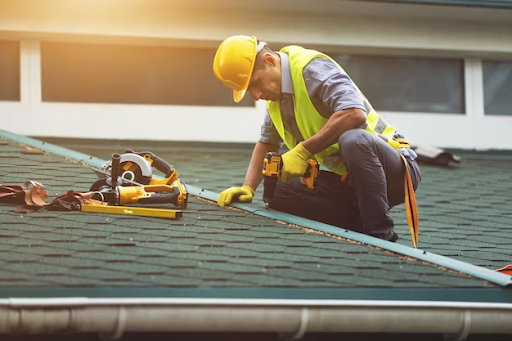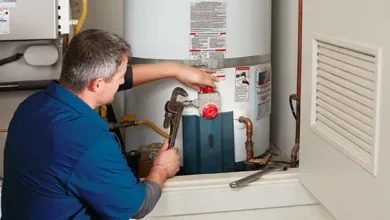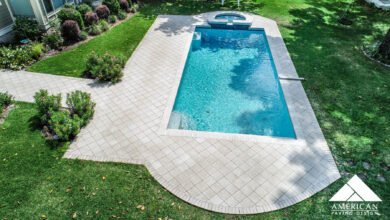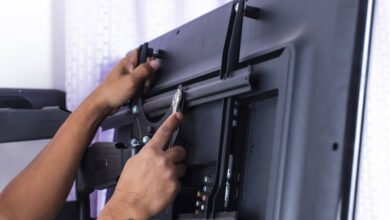Businessnewstips Guide on Understanding Common Roof Problems and Their Solutions

Roofs are one of the most essential components of any building, protecting the structure and its inhabitants from the elements. Whether residential or commercial, a well-maintained roof ensures the safety, comfort, and longevity of the property. However, just like any other part of a building, roofs are subject to wear and tear, exposure to harsh weather, and other damaging factors. Roof problems are common, and understanding them is crucial for homeowners, business owners, and property managers to ensure the longevity and functionality of their roof.
In this guide by Businessnewstips, we will take an in-depth look at the most common roof problems, their causes, and the solutions available to address them. Whether you are dealing with a leaking roof, damaged shingles, or structural issues, this guide will provide valuable insights to help you protect and maintain your roof effectively.
1. Leaky Roofs
Leaky roofs are perhaps the most common and problematic roofing issue. Water infiltration through the roof can lead to significant damage to the interior of the building, including walls, ceilings, insulation, and electrical systems. Roof leaks can be caused by various factors, including worn-out shingles, damaged flashing, clogged gutters, and even structural issues.
Causes of Roof Leaks
- Damaged Shingles: Over time, shingles can become cracked, curled, or missing due to exposure to the sun, wind, or rain.
- Damaged Flashing: Flashing is the metal material used to seal the joints and seams around chimneys, vents, skylights, and other roof penetrations. If flashing becomes damaged or dislodged, water can seep through these areas.
- Clogged Gutters: When gutters are clogged with leaves, debris, or dirt, water may pool on the roof and seep under shingles.
- Ice Dams: In colder climates, ice dams can form at the edge of the roof, preventing proper drainage and causing water to back up under shingles.
Solutions for Roof Leaks
- Shingle Replacement: If shingles are damaged, they should be replaced promptly to prevent water from entering the roof structure. A professional roofing contractor can identify and replace missing or damaged shingles.
- Flashing Repair or Replacement: Flashing should be inspected and replaced if necessary. Proper sealing around roof penetrations is crucial for preventing leaks.
- Gutter Cleaning and Maintenance: Regular cleaning of gutters and downspouts will ensure that water flows freely off the roof. Installing gutter guards can also help prevent debris accumulation.
- Ice Dam Prevention: Installing proper attic insulation and ventilation can prevent ice dams. Additionally, installing heated cables along the roof edge can help melt ice buildup.
2. Damaged Shingles
Shingles are the first line of defense against the elements, and when they become damaged, the roof is vulnerable to leaks and further deterioration. Damaged shingles can result from age, severe weather conditions, or improper installation.
Causes of Damaged Shingles
- Weather Conditions: High winds, hail, and heavy rain can cause shingles to lift, crack, or break.
- Sun Exposure: Prolonged exposure to the sun can cause shingles to deteriorate and become brittle.
- Improper Installation: If shingles are not installed correctly, they may become loose or misaligned, leading to damage.
Solutions for Damaged Shingles
- Shingle Replacement: The damaged shingles should be replaced with new ones to maintain the roof’s integrity. It is essential to match the new shingles to the existing ones to ensure a uniform look.
- Proper Installation: Ensuring proper installation of shingles is crucial to avoid future damage. Hiring a professional roofer with experience is key to getting the job done right.
- Roof Maintenance: Regular roof inspections and maintenance can help identify early signs of shingle damage, allowing for prompt repairs.
3. Poor Roof Ventilation
Roof ventilation is essential for maintaining the health of your roof and attic. Without proper ventilation, heat and moisture can build up in the attic, leading to a variety of roofing issues, including accelerated wear and tear of shingles, mold growth, and ice dams.
Causes of Poor Roof Ventilation
- Blocked Ventilation Holes: Over time, dust, debris, and insulation can block attic ventilation vents, causing heat and moisture buildup.
- Improperly Installed Ventilation: If the ventilation system is not installed correctly, it may not allow for proper airflow, leading to the buildup of heat and moisture in the attic.
Solutions for Poor Roof Ventilation
- Attic Ventilation Inspection: A professional roofer can inspect the attic ventilation to ensure that all vents are clear and functioning properly. If necessary, they can install additional ventilation to improve airflow.
- Ventilation Hole Cleaning: Cleaning out debris and dust from ventilation holes can help maintain proper airflow and prevent moisture buildup.
- Attic Insulation: Proper insulation in the attic can help regulate the temperature, preventing excessive heat buildup and condensation that can damage the roof.
4. Clogged Gutters
Gutters are essential for directing rainwater off the roof and away from the building’s foundation. However, when gutters become clogged with leaves, dirt, and debris, they can no longer effectively channel water away from the roof. This can result in water pooling on the roof, leading to leaks, rot, and other damage.
Causes of Clogged Gutters
- Debris Accumulation: Leaves, twigs, dirt, and other debris can build up in gutters, causing blockages and preventing proper drainage.
- Improper Gutter Design: Gutters that are too small or poorly designed can be more prone to clogging and may require more frequent cleaning.
Solutions for Clogged Gutters
- Regular Gutter Cleaning: Gutters should be cleaned at least twice a year, especially during the fall when leaves are most likely to accumulate. Removing debris and ensuring proper water flow can prevent gutter clogs.
- Gutter Guards: Installing gutter guards can help prevent debris from accumulating in the gutters and reduce the need for frequent cleaning.
- Gutter Repair or Replacement: If gutters are damaged or misaligned, they should be repaired or replaced to ensure proper water flow.
5. Roof Ponding (Standing Water)
Roof ponding occurs when water collects in low spots on the roof and fails to drain properly. This issue is commonly seen on flat or low-slope roofs and can lead to significant water damage if not addressed quickly.
Causes of Roof Ponding
- Poor Roof Slope: A roof that does not have enough slope can cause water to pool in certain areas, leading to ponding.
- Clogged Drains: If the roof drains become clogged with debris, water cannot flow off the roof, causing it to accumulate in low areas.
Solutions for Roof Ponding
- Roof Resloping: In some cases, the roof may need to be resloped to ensure proper drainage. This can be a costly but necessary solution for preventing ponding on flat roofs.
- Drain Cleaning and Maintenance: Regular cleaning and maintenance of roof drains are essential to prevent blockages that can cause water buildup.
- Roof Coating: Applying a reflective roof coating can help improve drainage and reduce the effects of ponding by promoting evaporation.
6. Moss and Algae Growth
Moss, algae, and other vegetation can grow on roofs, particularly in damp, shaded areas. While these organisms may not seem like a serious concern, they can cause long-term damage to roofing materials and compromise the roof’s integrity.
Causes of Moss and Algae Growth
- Moisture: Moss and algae thrive in damp, shaded conditions. Roofs that do not receive adequate sunlight are more prone to moss and algae growth.
- Debris Accumulation: Debris, such as leaves and branches, can trap moisture on the roof and create an ideal environment for moss and algae.
Solutions for Moss and Algae Growth
- Roof Cleaning: Moss and algae can be removed from the roof using a pressure washer or specialized cleaning solutions. However, this should be done carefully to avoid damaging the shingles.
- Algae-Resistant Shingles: Installing algae-resistant shingles can help prevent future growth. These shingles are treated with a special coating that inhibits the growth of moss and algae.
- Trimming Overhanging Branches: Trimming overhanging branches can allow more sunlight to reach the roof, reducing the chances of moss and algae growth.
7. Structural Issues
In some cases, roofs may experience structural issues that affect their stability and function. These problems are often more complex and require professional intervention.
Causes of Structural Issues
- Age: As roofs age, the underlying structure can deteriorate due to prolonged exposure to moisture, heat, and weather.
- Improper Installation: Incorrectly installed roofing systems may lead to structural problems, including sagging or uneven roofing.
- Water Damage: Prolonged water infiltration can cause wood rot and weakening of the roof’s structural components.
Solutions for Structural Issues
- Roof Inspection: A professional roofing contractor should inspect the roof’s structural integrity to identify any problems. They will assess the framing, trusses, and decking for signs of damage or instability.
- Roof Reinforcement: In some cases, the roof may need to be reinforced with additional support to prevent further damage.
- Full Roof Replacement: If the roof structure is severely compromised, a full roof replacement may be necessary to restore the building’s stability.
Conclusion
Understanding common roof problems and their solutions is essential for maintaining the safety, comfort, and longevity of your property. Regular roof inspections and maintenance can help identify issues early on, preventing costly repairs down the line. Whether you’re dealing with leaks, damaged shingles, poor ventilation, or more severe structural problems, timely action is key to preserving your roof and protecting your investment. By staying proactive and addressing roof problems promptly, you can ensure that your roof continues to provide reliable protection for years to come.




